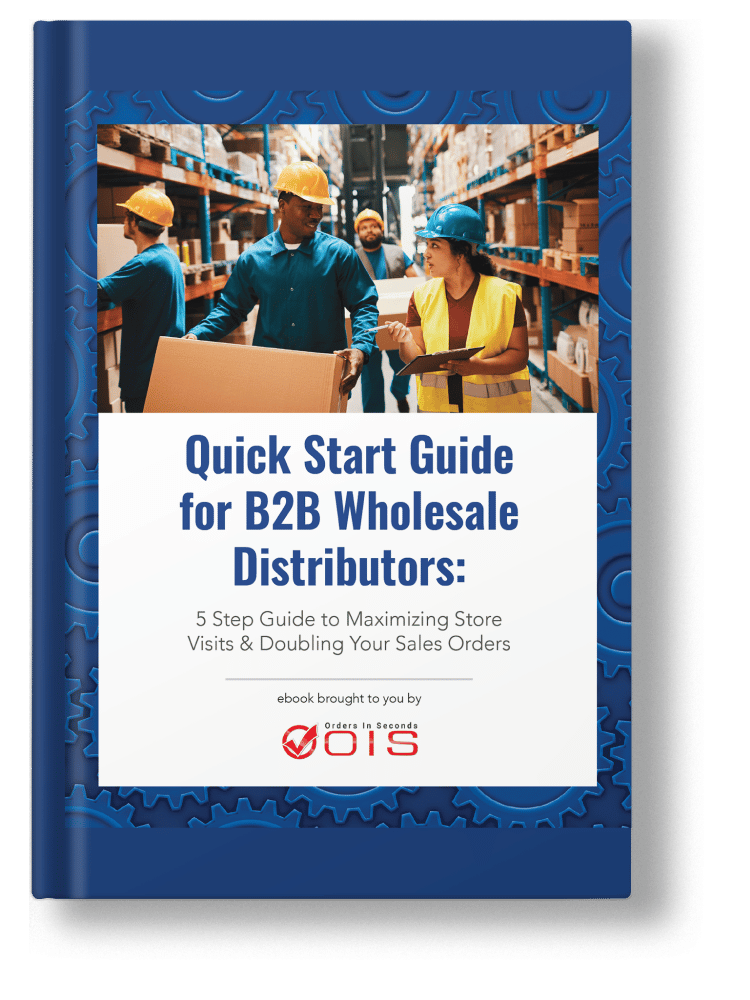Calculating safety stock is critical to safeguard your operations against uncertainties. This focused guide explains how to calculate safety stock effectively, laying out the simple math and strategic thinking needed to optimize inventory levels. Expect to gain straightforward formulas and proven techniques that balance inventory costs with customer satisfaction—a must-know for any business looking to thrive in today’s dynamic market.
Key Takeaways
- Safety stock is like your inventory’s cushion, keeping you safe from unexpected surges in demand or delays in supply. Remember, it’s all about having that little bit extra without going overboard.
- Calculating safety stock isn’t just guesswork; it’s a precise dance with numbers. You’ll start simple, but soon you’ll be factoring in things like how wonky demand can be and how long it takes to restock.
- Keeping your safety stock in check is crucial. Get it right, and you’re the hero—stockouts avoided, customers happy. Mess up, and you’re either swimming in excess stuff or watching sales slip away.
Table of Contents
- Unlocking the Mystery of Safety Stock: A Step-by-Step Guide
- The Core of Safety Stock Calculation: Formulas Unveiled
- Fine-Tuning Your Safety Stock Levels
- Reorder Point: The Critical Trigger in Inventory Management
- Economic Order Quantity (EOQ) and Safety Stock: A Balancing Act
- Inventory Management Software: Automating Safety Stock Calculations
- Real-World Applications: Safety Stock Success Stories
- Ensuring Accuracy: Common Pitfalls in Safety Stock Calculation
- Forecasting for the Future: Anticipating Demand Risks
- Summary
- Frequently Asked Questions
Unlocking the Mystery of Safety Stock: A Step-by-Step Guide

Safety stock is the invisible hero of inventory management, quietly guarding against the unforeseen and ensuring smooth sailing for your business operations. But how do you calculate it just right? With a step-by-step guide that demystifies the safety stock formula, you’ll discover not only how to calculate safety stock but why mastering this skill can mean the difference between maximizing revenue and grappling with stockouts. In this guide, we’ll also cover the importance of calculating safety stock in your inventory management strategy and address the question of how much safety stock is needed.
Understanding Safety Stock and Its Role in Inventory Management
Safety stock acts as your buffer against the unexpected—a levee holding back the flood of supply chain disruptions and sudden demand surges. It’s about having just enough extra inventory to maintain customer satisfaction and loyalty, even when the market throws you a curveball. Think of it as your insurance policy for inventory management, one that ensures you have enough stock to replenish and meet customer demand without missing a beat.

Avoid the Top 5 Mistakes Wholesale Distributors Make
Gathering Your Data: What You Need to Know
To calculate the optimal safety stock levels, you’ll need to gather some critical data points. These include:
- Average daily usage
- Average lead time
- Maximum daily usage
- Maximum lead time
The Core of Safety Stock Calculation: Formulas Unveiled

Peering into the core of safety stock calculation, you’ll encounter a variety of formulas. From the basic to the sophisticated, each formula serves a purpose, catering to the unique ebb and flow of your business.
What’s more, incorporating lead time and demand variability into more advanced safety stock calculations ensures that your inventory levels reflect the true nature of the marketplace.
Basic Safety Stock Formula: The Starting Point
Kick off your journey with the basic safety stock formula—a straightforward method that multiplies maximum daily sales by maximum lead time and then takes away the product of average daily sales and lead time. It’s the foundation upon which more complex calculations are built, providing a starting point for businesses to ensure they have enough buffer stock to handle variations in both supply and demand.
Advanced Calculations: Incorporating Variability and Service Levels
When you step into the realm of advanced safety stock calculations, you’re looking at a more nuanced approach that factors in the unpredictable nature of supply and demand. By using historical sales data and understanding the impact of demand variability, you can tailor your safety stock levels to meet customer expectations without overstocking.
Fine-Tuning Your Safety Stock Levels

Fine-tuning your safety stock levels is about striking the perfect balance. It involves a dance between managing:
- demand variations
- lead times
- product categorization
- the yin and yang of overstocking and understocking costs.
Regular recalibration of your safety stock formula ensures your strategy is as dynamic as the market you serve.
Adjusting for Seasonal Demand: When More Is Necessary
Seasonal shifts in demand can throw a wrench into even the best-laid inventory plans. Adjusting your safety stock for these fluctuations is not just wise—it’s necessary to prevent stockouts when customer demand peaks.
By using historical sales trends, you can determine the right amount of safety stock to carry during these busy periods without burdening your business with excessive inventory costs year-round.
Reducing Excess Inventory: Minimizing Costs without Sacrificing Service
The flip side of the coin is the peril of excess inventory. Holding too much safety stock can be a costly affair, tying up capital and limiting your ability to diversify product offerings. It’s a balancing act where the aim is to minimize costs while still being able to meet customer demand swiftly and effectively, considering supply and demand risks.
Reorder Point: The Critical Trigger in Inventory Management

The reorder point formula is your inventory management’s pulse, signaling when it’s time to replenish stock and keep your operations running smoothly. It combines the average daily usage and lead time with your predetermined safety stock level, giving you a clear trigger point for when to initiate a new order.
Calculating Reorder Point with Safety Stock in Mind
Calculating your reorder point with a focus on safety stock levels ensures that you’re always a step ahead. It’s about having the foresight to anticipate and act before a potential stockout can disrupt your business flow.
The Economic Order Quantity (EOQ) model is another piece of the inventory management puzzle, working in tandem with safety stock to minimize ordering and holding costs. When you integrate EOQ with your safety stock strategy, it’s like finding the sweet spot where costs are kept low, and service levels are high.
Integrating EOQ into Your Safety Stock Strategy

Integrating EOQ into your safety stock strategy is not just smart; it’s a strategic move that can lead to significant cost savings and optimized inventory levels. It’s a way to embrace bulk purchasing benefits while avoiding the pitfalls of frequent, smaller orders.
The advent of inventory management software has revolutionized the way businesses calculate safety stock, transforming a complex task into a streamlined, automated process. With features like automatic reorder point notifications and real-time SKU tracking, these tools help maintain optimal safety stock levels without the manual labor.
How Inventory Management Software Simplifies Safety Stock
Inventory management software simplifies safety stock by providing a data-driven approach to managing inventory levels. It leverages advanced statistical models and real-time data to ensure that your safety stock levels are always aligned with your business goals.
Real-World Applications: Safety Stock Success Stories
Real-world success stories illustrate the transformative power of accurate safety stock management. From preventing costly rush restocking orders to preserving profit margins, effective safety stock calculations have proven their worth across various industry giants.
Lessons from Leaders: How Top Companies Manage Safety Stock
Lessons from top companies demonstrate the importance of finding the right balance in safety stock management. It’s a strategic decision that protects market share and customer satisfaction while avoiding the risks and costs associated with overstocking.
Ensuring Accuracy: Common Pitfalls in Safety Stock Calculation
Ensuring accuracy in safety stock calculation is crucial, but it’s also fraught with pitfalls. Some common errors to watch out for include:
- Misinterpretation of formulas
- Differing perspectives between operations and financial managers
- Lack of consideration for lead time variability
- Failure to account for seasonality or demand trends
These errors can lead to inventory inefficiencies and should be avoided.
Avoiding Overstocking: Why Too Much Safety Stock Can Hurt
Overstocking safety stock is a double-edged sword. While it provides a buffer against risks, such as stock outs, it also incurs higher inventory costs and can limit your ability to respond to market changes.
Lead Time Variability: Accounting for Supplier Inconsistencies
Lead time variability and supplier inconsistencies are critical factors to consider in safety stock calculation. Ignoring these can lead to overstocking or stockouts, impacting overall inventory management.
Forecasting for the Future: Anticipating Demand Risks
Anticipating demand risks and improving forecasting accuracy is essential for inventory management. By leveraging advanced inventory systems and real-time data, businesses can set safety stock levels that prepare them for unforeseen events.
Using Historical Sales Data to Predict Customer Demand
Historical sales data is a treasure trove of information that can help predict future demand and optimize safety stock levels. By analyzing past trends, businesses can make informed decisions that align with market changes.
Summary
In conclusion, mastering inventory management through accurate safety stock calculation is a journey of strategy, data analysis, and technology. By understanding the principles, embracing the formulas, and utilizing the right tools, businesses can navigate the complex world of inventory with confidence. Let’s embrace this knowledge and turn potential stockouts into opportunities for growth and customer satisfaction.
Frequently Asked Questions
Safety stock is the extra inventory kept on hand to prevent stockouts due to unexpected demand or supply chain disruptions. It’s essential because it helps businesses meet customer demand without interruption, maintaining customer satisfaction and loyalty.
To calculate the appropriate level of safety stock for your business, gather data on average daily sales, maximum daily usage, average lead time, and maximum lead time, then use a safety stock formula that considers these variables and desired service levels.
Can inventory management software really make a difference in how I manage safety stock?
Absolutely! Inventory management software can simplify and enhance safety stock management by automating calculations, offering real-time data analysis, and providing forecasting tools. This can help you achieve more accurate safety stock levels and save costs.
When calculating safety stock, avoid using outdated formulas and misinterpreting formulas in your systems. Also, ensure that there is a clear understanding of safety stock among managers and avoid manipulating safety stock levels for short-term financial gains. Watch out for these pitfalls to ensure accurate safety stock calculation.
You should review and adjust your safety stock levels regularly to keep them in line with market changes and your business operations. This will help ensure that your inventory management strategy is always effective and meets your current business needs.
Streamline Safety Stock Management with Orders in Seconds
Mastering safety stock calculations is just the first step. Manually managing inventory, forecasting demand, and coordinating orders can be time-consuming and error-prone. This can lead to inaccurate safety stock levels, missed sales opportunities, and frustrated customers.
Orders in Seconds empowers you to streamline your safety stock management from order creation to fulfillment. The OIS Pro App provides real-time inventory when order taking, allowing field sales reps to make data-driven decisions about safety stock levels based on actual stock, not outdated information.
On the other hand, the OIS Inventory App simplifies your warehouse order-picking process, saving you time and minimizing errors. This user-friendly app allows your team to easily view orders, filter by picking status, and locate products with bin location fields. Barcode scanning integration ensures accurate picking and real-time inventory updates.
Ready to take control of your safety stock and unlock new efficiencies? Try Orders in Seconds today!





